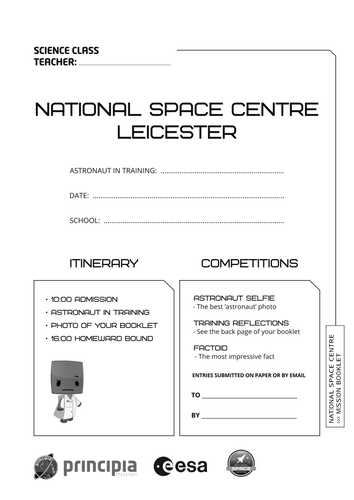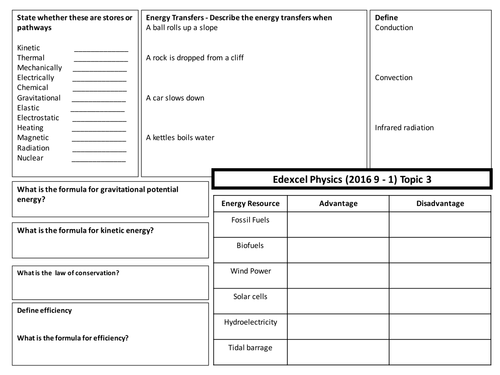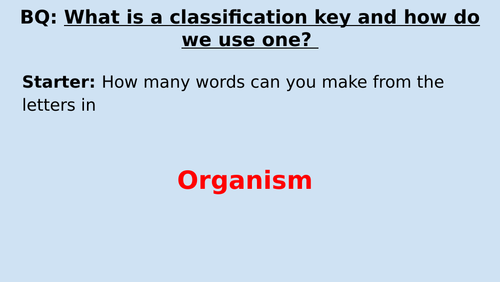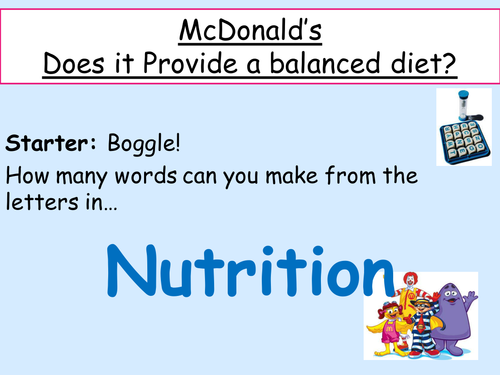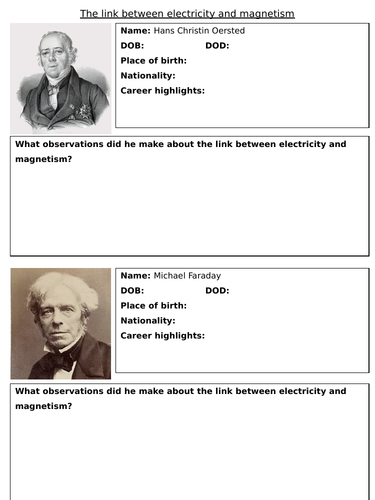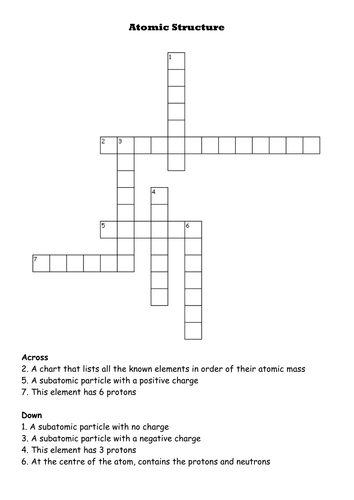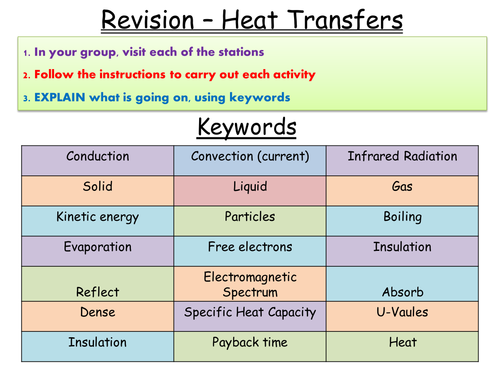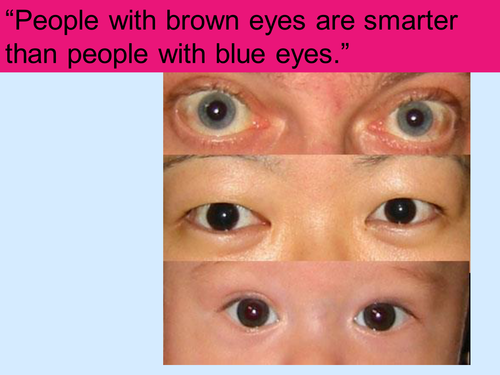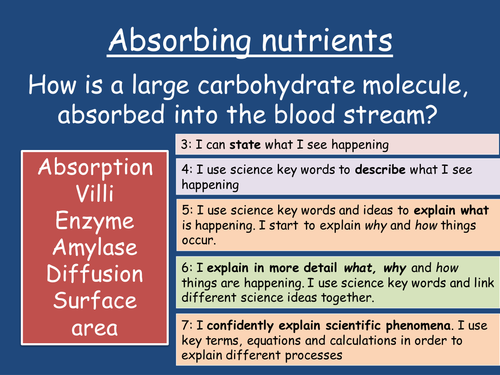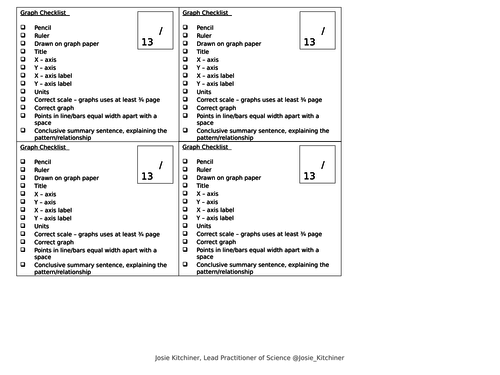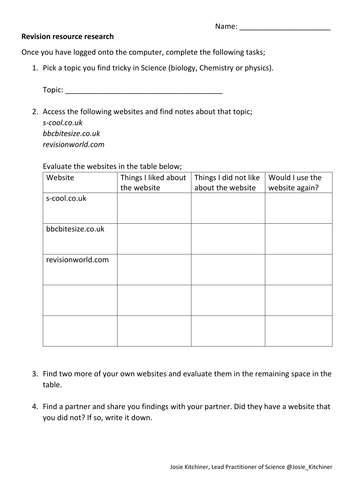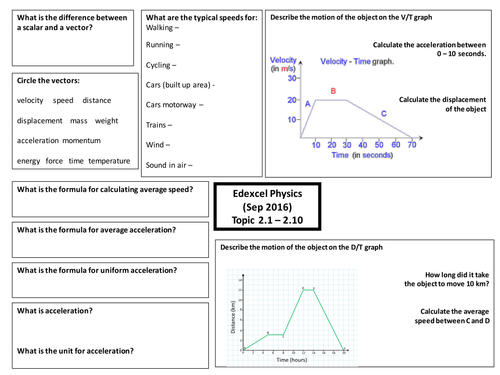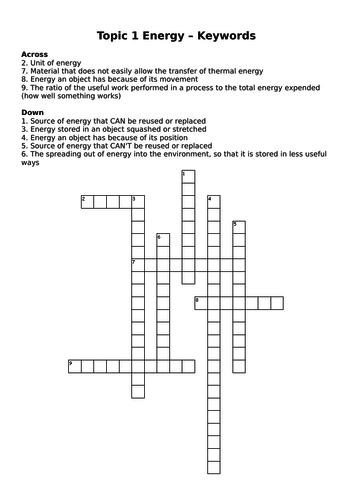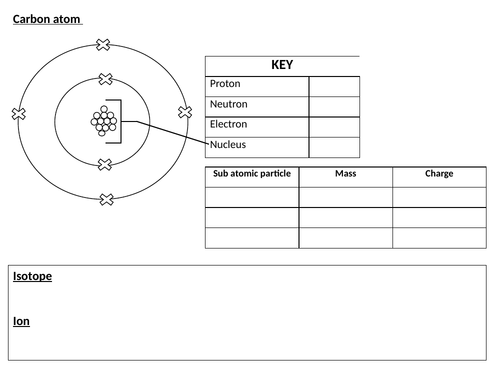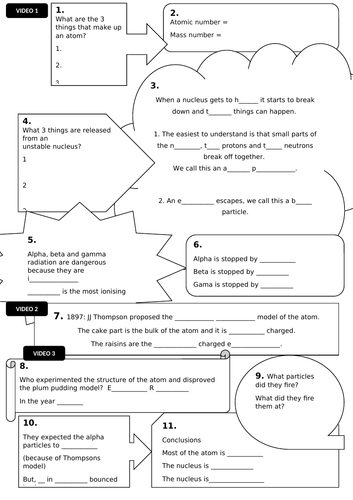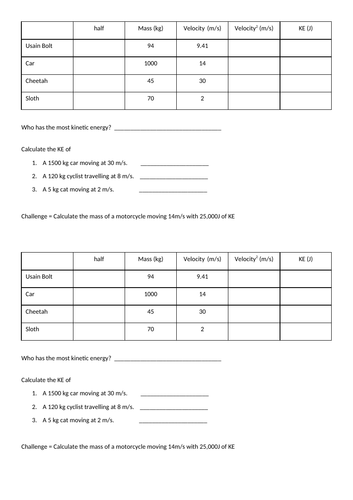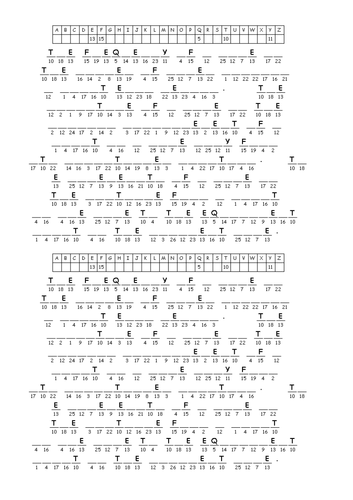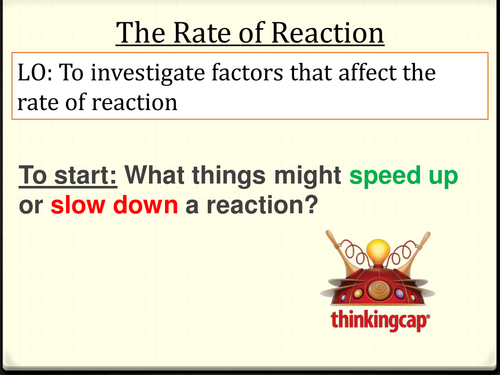
41Uploads
84k+Views
71k+Downloads
All resources

National Space Centre Mission Booklet
I created a workbook for our Year 7's trip to the National Space Centre in June 2016. As teachers, we found the workbook encouraged pupils to read and absorb the exhibits, rather than just pushing buttons.
I emailed the resource to the NSC, to request their permission to share the resource on TES (as I had added photos of the NSC and a copy of their map). The NSC kindly adapted the booklet to make it look a little more professional and updated questions on exhibits that have changed.
The Space Centre is a fantastic day out, I would thoroughly recommend it. The planetarium is well worth a visit.

Energy Stores and Pathways, Energy resources - Knowledge organiser - Edexcel 9 -1 Physics
Knowledge organiser for Edexcel 9 -1 Physics, Topic 3
Answers provided, both in a format to print or to display

KS2 Classification - Using Classification keys
A lesson for Y5/6 Biology, looking at classification keys
I have made the PowerPoint myself, but used resources from other educators who have given permission for their resources to be shared.
Here is a link to the Google slides, if you chose Google over PowerPoint
https://docs.google.com/presentation/d/15UzugZqdwYxHKrOvyLgcIDjqoO7pVqlxXx1iby1yL9E/edit?usp=sharing

Balanced Diet - Food tests on McDonald's
After teaching a lesson on the 7 food groups, students use food tests to conclude whether or not McDonald's provides a balanced diet. I buy a big Mac to test. Then watch a short clip on the Supersize documentary and analyse the symptoms of a high fat/high sugar diet; physical and mental. There is also opportunity to evaluate the food tests as methods of identifying nutritional content.
I would recommend setting up the food tests as a circus of activities. I have two circuses on the go, so 8 stations. However, this would depend on your lab layout and your class.

The link between electricity and magnetism (homework/revision)
Some short answer questions o the link between electricity and magnetism, including a short piece of research on two of the key scientists.

Atomic Structure Crossword
A basic crossword for the introduction of atomic structure. Answers at the end of the document.

Heat Transfers Revision Circus
A revision lesson on the heat transfers topic, suitable for OCR Gateway and AQA P1. Students carry out a circus of activities, using keywords to explain what is happening.
Have the 8 stations laid out around the room, with the station cards. As students move about the room, display the keywords on the board. Then use the PowerPoint to talk through the key ideas.

Investigate - How can we find out if a claim is true
Encourages pupils to consider the reliability of information, and not to just take headlines as fact. Many young people 'share' stories on Facebook and Twitter, without considering the source of information and the reliability of the research.
After discussion, pupils design their own investigation to test if a claim is true.

Atomic Structure - Online Revision
Revision websites for Atomic Structure, with a review activity to enable pupils to select the most effective online resource for their own learning and independent revision.

Elements and Electron configuration match up
Elements and Electron configuration match up
A match up activity for lower ability groups - match the element to its electron configuration. PP Answers provided to display to the class.

Enzymes and Absorption - Carbohydrate breakdown assessed question
Pupils use keywords to describe and explain how a large carbohydrate molecule is absorbed. They then use the pupil-friendly mark scheme to self or peer assess. 11 marks for Scientific content and 4 marks for spelling and grammar.

Graph Marking Sheet
A checklist to use when drawing graphs, or a resource for self-assessment/peer assessment of graphs

Science revision website evaluation
Provides pupils an opportunity to review the various GCSE revision websites available and conclude which is most suitable for them.

Forces and Motion topic 2.01 - 2.10 revision broadsheet (Edexcel 9-1)
Forces and Motion topic 2.01 - 2.10 revision broadsheet (Edexcel 9-1)
With answers

Atomic Structure - Support sheet
A template/writing frame to use for teaching atomic structure, to support students with note taking.

Atomic Structure and Radioactivity Revision (Lower Ability)
Students watch 3 short videos (links at the end of the document) answering the questions on the first sheet as they watch. Then, they can use their notes and what they have watched to complete the grids on the second sheet.
The word search can be used as a settling starter.
This is aimed at students who struggle with Scientific concepts and lack concentration during revision.

Wave Anatomy Cryptogram
Wave Anatomy Cryptogram
Students crack a code to obtain 3 key definitions
**Answer **
The frequency of a wave is the number of waves passing a point each second.
The amplitude of a wave is the maximum displacement of a point on a wave away from its undisturbed position.
The wavelength of a wave is the distance from a point on one wave to the equivalent point on the adjacent wave.

Investigation skills - Rates of Reaction with Rhubarb
Students investigate how surface area affect rates of reaction, with rhubarb

